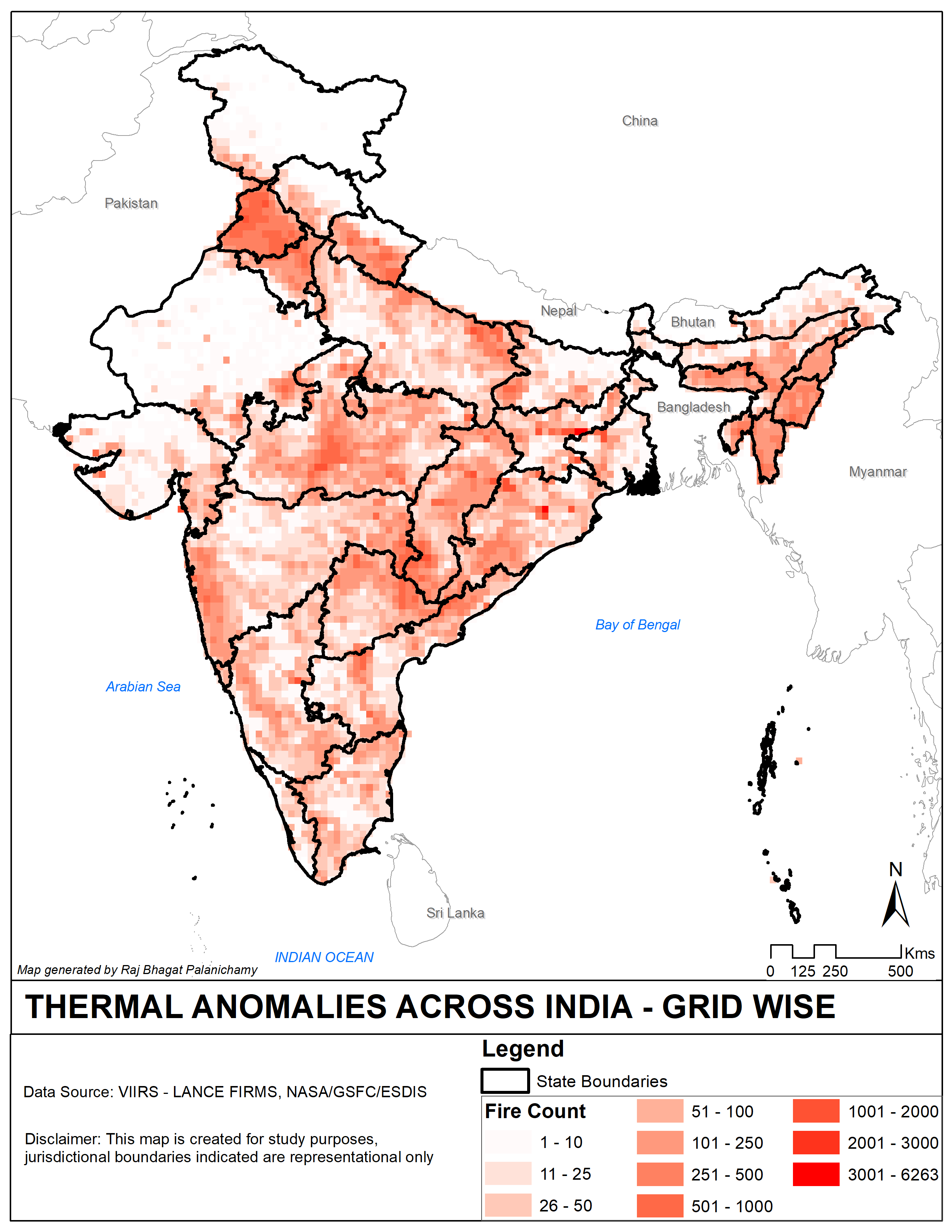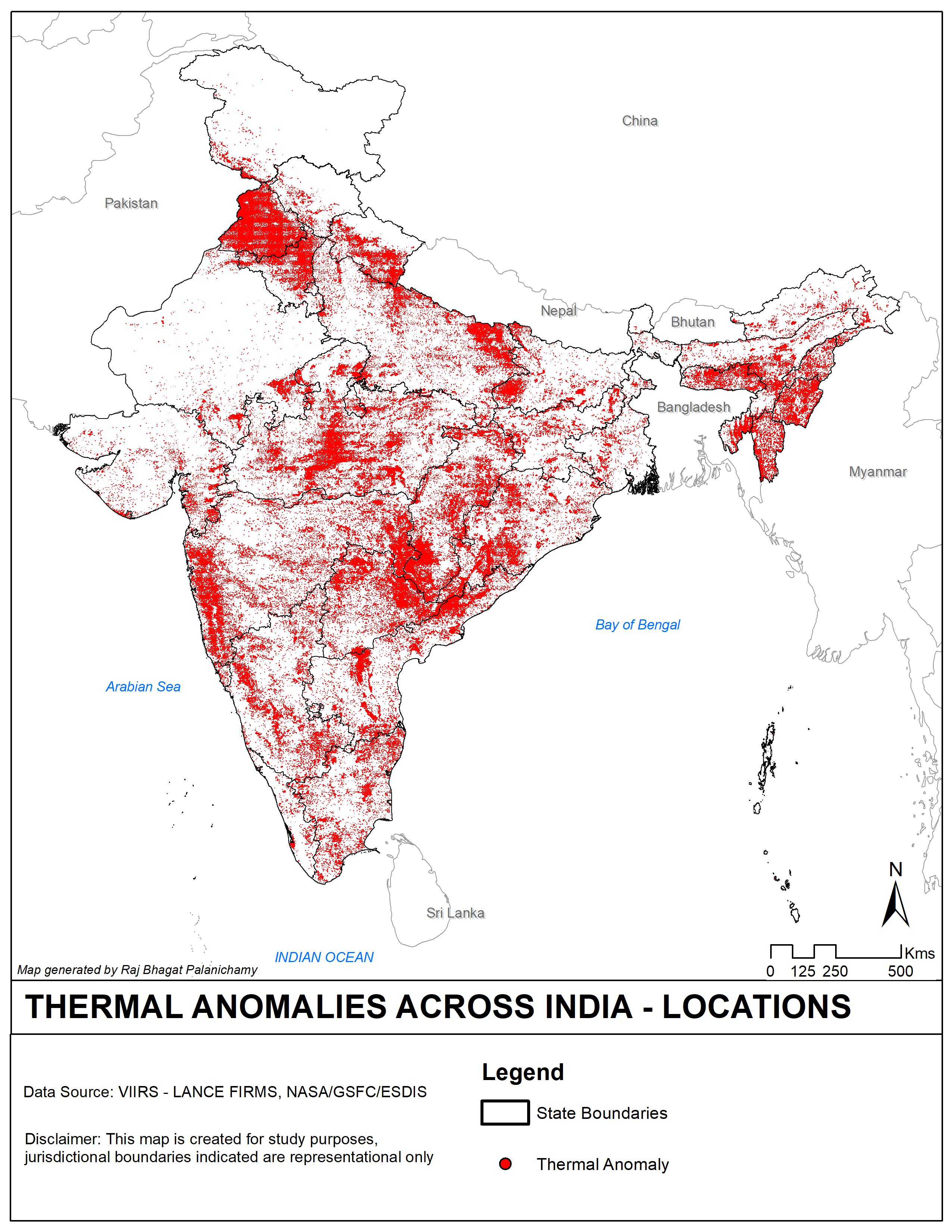AP & TS lead in forest fires in South India, says Satellite data
By Dheeshma
Hyderabad: Satellite-based data extracted from VIIRS show there were around half-million fire incidents in the country in 2019. India’s southern states are also not spared from fire incidents. According to forest survey of India, the five southern states of India witnessed 37 per cent of forest fires in 2019. This is 4,980 out of 28,252 forest fires that occurred in India between January 1, 2019, and June 16, 2019. Andhra Pradesh records the highest with 1,731 forest fire alerts, followed by Telangana.
| STATE | FOREST FIRE ALERTS (1st January 2019 to 16th June 2019) |
| ANDHRA PRADESH | 1731 |
| TELANGANA | 1181 |
| KARNATAKA | 1130 |
| TAMIL NADU | 748 |
| KERALA | 191 |
However, despite forest fires increasing alarmingly in the five states since 2015, according to Down To Earth’s State of the Environment Report 2019, fire prevention appears to be low on priority in the southern states. As per the report, in Karnataka, Kerala and Tamil Nadu 40 per cent of the funds meant to contain fire remains unspent.
 Image courtesy: Raj Bhagat Palanichamy
Image courtesy: Raj Bhagat Palanichamy
The top five Indian states with the highest number of fire alerts in 2018-2019 are Madhya Pradesh, Mizoram, Maharashtra, Odisha and Assam.

While the number of forest fires increased by 125 per cent between 2015 and 2017, the amount of fire prevention fund released has decreased from Rs 43.85 crore in 2015 to Rs 34.56 crore in 2017. However, it came up to Rs 46.13 crore in 2018.
Year | No. of forest fire alert as per FSI | Fund Released in crores |
| 2015 | 15,937 | 43.84 |
| 2016 | 24,817 | 44.39 |
| 2017 | 35,888 | 34.56 |
| 2018 | 37,059 | 46.13 |
A comprehensive and long-term policy is required to manage the uncontrolled and complex forest fires. According to the India State of Forest Report 2017, people set fire to forests for reasons such as non-timber forest produce collection, shifting cultivation, and for hunting/poaching purposes.
A comprehensive action plan and strategies report on “Forest Fires, and its Effect” was presented to Parliament in 2016 to curtail forest fires a long-term assessment of forest areas, which are consistently vulnerable to fire. The report reveals that forest fires have been causing following adverse effects on the health of Forest-ecosystem:
- Damage to vegetation cover and loss of Natural Regeneration
- Damage to Mature Chir-Pine Trees
- Loss of Wildlife Habitat
- Change in Micro-climate
- Loss of Biodiversity and Invasion of Weeds
- Adverse Effect on the Livelihood of Local People
- Loss of Carbon Sink and Addition of GHGs
This is not an animation of #Diwali #Deepavali lights, this is a compilation of all thermal anomalies across India in 2019. It consists of forest fires, crop fires, garbage dump fires etc.
In the last few weeks fires are observed across #Punjab #Haryana #UttarPradesh#VIIRS Data pic.twitter.com/RmGdrMz1oM
— Raj Bhagat Palanichamy (@rajbhagatt) October 26, 2019
Stubble burning
While forest burning contributes to fire incidents in the country, most of it comes from crop burning in states like Haryana and Punjab, where wheat and rice are widely grown. Stubble burning is a significant contributor to air pollution as well. Earlier this month, US space agency NASA released a few images showing the number of fire incidents occurring in the Northeastern region of the country due to stubble burning.
 Image courtesy: Raj Bhagat Palanichamy
Image courtesy: Raj Bhagat Palanichamy
Despite efforts to curb crop burning, the number of such incidents is becoming more common in recent years. According to government data, Haryana and Punjab recorded at least 2,400 farm fires until October 27, 2019, due to which the air quality of Delhi touched a ‘very poor’ Air Quality Index (AQI) of 436. It is in spite of celebrating the cleanest Diwali in the last few years.
(Image courtesy: Raj Bhagat Palanichamy, Manager - Data Analytics , WRI India. He works on the themes of GIS and Remote Sensing Applications for urban development, water resources, and transport)